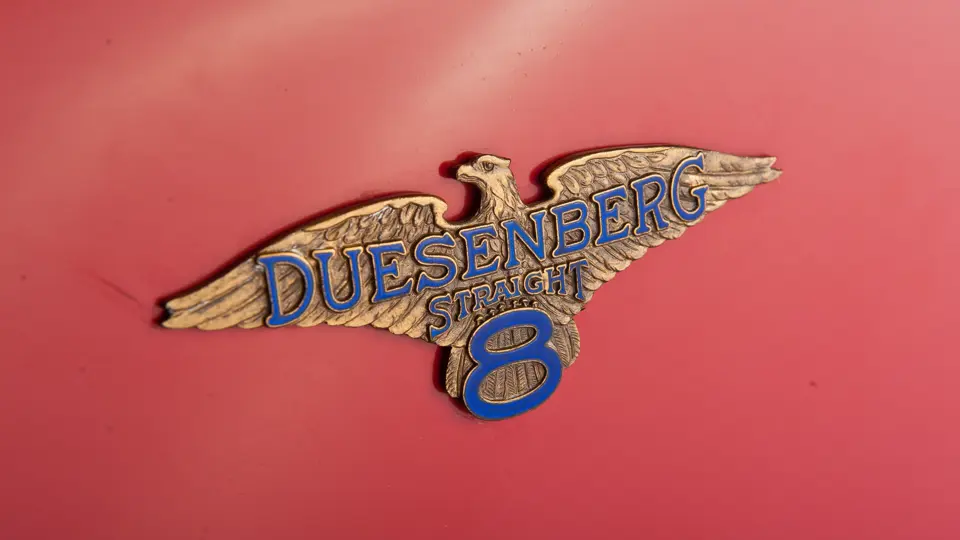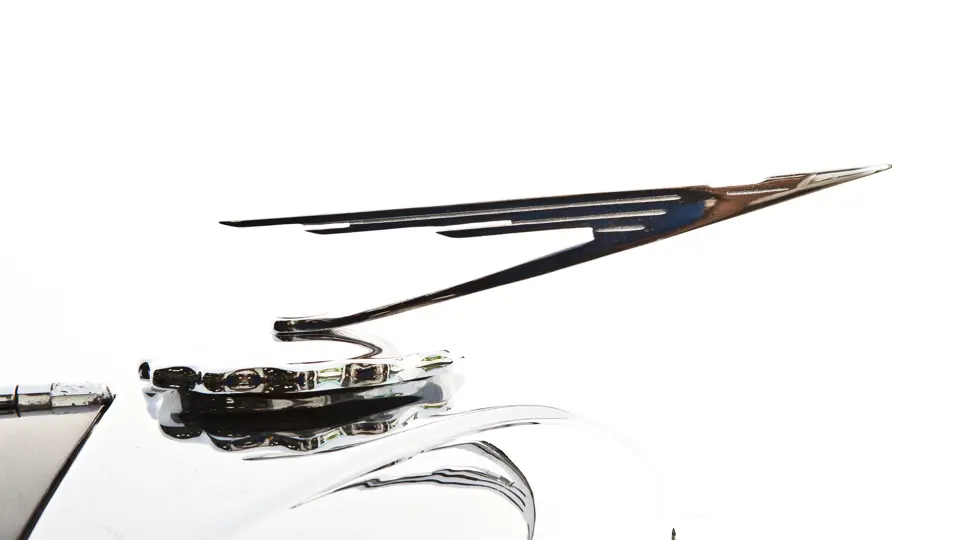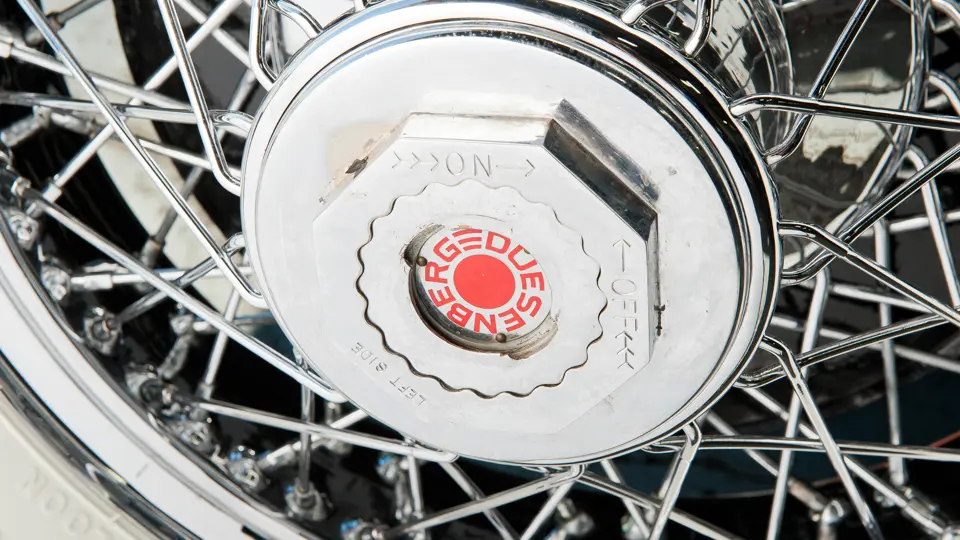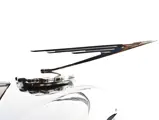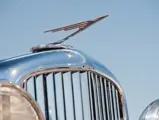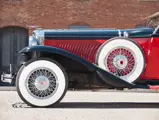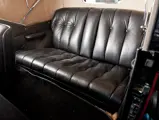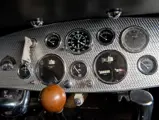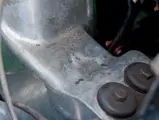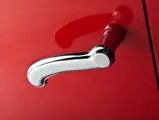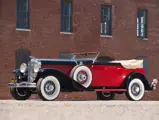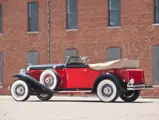265 hp, 420 cu. in. 32-valve, DOHC straight eight-cylinder engine, two-barrel updraft Stromberg carburetor, three-speed manual transmission, front and rear semi-elliptic leaf springs, rear live axle, four-wheel hydraulic drum brakes. Wheelbase: 142.5"
- From the Estate of Paul Chamberlain, who owned it for 60 years
- Unusual short-wheelbase Rollston Convertible Victoria
- Believed to have been sold new in Los Angeles in December 1935
- Black over red, with black leather interior and cream top
- Retaining original engine J538
The Duesenberg Model J epitomizes the Roaring ’20s, when all the chassis were built, though most of the 481 cars were completed and sold in the 1930s, as America’s classic supercar struggled through the Depression.
There’s a famous story that business on the New York Stock Exchange was actually halted on December 1, 1928, when the car was announced at the New York Auto Salon. Even if it isn’t true, it should have been. As newspaper editor Dutton Peabody (Edmund O’Brien) says in The Man Who Shot Liberty Valance, “When the legend becomes fact, print the legend.”
And the Duesenberg Model J and its supercharged sibling, the SJ, have certainly achieved legendary status. Ahead of every engineering genius like Fred Duesenberg, it helps to have a visionary magnate like Erret Lobban Cord. His stunning salvation of the Auburn Automobile Company in 1924 – when he was only 29 – led directly to his acquisition of Duesenberg in October 1926. Cord had managed to sell a huge backup of stodgy Auburn sedans and coupes by pulling them back into the factory and repainting them in bright colors, doubling sales in a year. He was looking for a prestigious nameplate to add to his growing empire and Duesenberg was ideal.
The brothers Fred and August had been building cars since 1914 and racing successfully almost as long. They placed 2nd in the Indy 500 in 1916, then applied a supercharger to their 1924 entry (and won), repeating that in 1925 and 1927. In between, Tommy Milton achieved 156.04 mph at Daytona in 1920 – a land-speed record that would stand until 1927, when Malcolm Campbell broke it at 201 mph with Bluebird. Jimmy Murphy won the 1921 French Grand Prix in a Duesenberg, which certainly caused the Europeans to sit up and take notice, and back home, the company introduced the Model A in 1921, which was the first production car to have four-wheel hydraulic brakes. It later offered a supercharger option, which may have been a first too.
Cord’s first move after the merger was to relieve Fred Duesenberg of the responsibility of running the factory on a day-to-day basis. His second was to tell Fred to design a new car: “the biggest, fastest and most powerful stock automobile the world has ever seen.”
What Fred Duesenberg came up with was a 420-cubic inch, 32-valve, twin-cam straight eight engine, generating 265 horsepower at 4,200 rpm in normally aspirated form and 320 horsepower when supercharged. It was available in two wheelbase lengths, 142.5 inches for the “short” chassis and an enormous 153.5 inches for the long one.
To put these performance figures in perspective – and they are impressive today – Cadillac’s V-16, which was big enough to power a dirigible, only developed 175 horsepower, while Packard’s 734 straight eight Speedster managed a wheezy 145 horsepower. The Duesenberg’s power meant the engine could propel even a 6,750-pound limousine at 100+ mph.
Six months before the Model J’s launch, coachbuilders Holbrook, Murphy and LeBaron were sent drawings of the J’s chassis and invited to submit designs for the new car. Cord theorized that the only reason Americans bought an enormous and luxurious Hispano-Suiza, Rolls-Royce, Mercedes-Benz or Isotta-Fraschini was that there was no domestic equivalent. So he fixed that. Every coachbuilder of note would eventually build bodies for Duesenbergs. The list is practically an alphabetical guide and includes Barker, Bohman and Schwartz, Brewster, Brunn, Derham, Dietrich, Fernandez and Darrin, Franay, Graber, LeBaron, Rollston, Saoutchik and Vanden Plas, among others.
A number of cars were re-bodied several times or modified later to stay modern, which accounts for more than 500 photographs of different cars before the company finally closed its doors in 1937. Naturally the rich and famous patronized the firm – everyone from European royalty like the King of Romania, Indian maharajahs, millionaires like Howard Hughes, the Vanderbilts and Wrigleys and movie stars like Clark Gable and Gary Cooper. The chassis alone cost $8,500 at launch (it went up to $9,500 later), and by the time the buyer had added a custom body, the final tally was over $20,000.
Different coachbuilders specialized in different body styles. Murphy was known for a number of Convertible Coupes and Berlines, Derham built formal sedans, Bohman and Schwartz modernized quite a few cars and tended to stay abreast of current trends, and Rollston produced a large number of Convertible Victorias, such as the one on offer today.
Convertible Victorias were much more popular in Europe than the U.S., where a rumble seat was preferred for occasional occupancy. In a Victoria, the lined top features a wide C-pillar sail panel, which surrounds the back seat. The occupants have very little visibility, which might suit them just fine. Rollston built long- and short-wheelbase examples, though the SWB model tends to be better proportioned. Some Rollston Convertible Victorias include rear quarter windows to improve visibility, and a few even have removable curtains, though that’s not a very attractive solution.
This car, s/n 2566 (still fitted with its original engine #J538) comes to market from the Estate of Paul Chamberlain in Auburn, California. He owned it for an extraordinary 60 years, originally buying it in December 1951.
Chassis no. 2566 is fitted with a very attractive Convertible Victoria Body, the way it was delivered new. In fact, Rollston fitted this design to various chassis, including Duesenberg, Stutz and Packard.
While the original owner is not known, the car appears to have been sold as a used car by the Chicago Factory Branch in December 1935, when it cost $5,225 and showed just 4,000 miles on the odometer.
The next private owner of record was San Franciscan Leo Bertelsen in the immediate postwar period, who sold the car in 1949 to William Craig of Reno, Nevada. H.B. Bertillion of Oakland subsequently owned the car before it was finally acquired in 1951 by Paul Chamberlain.
In December of that year Mr. Chamberlain saw s/n 2566 and must have fallen in love with the car. At the time, Chamberlain was a young man starting his career, and as a result, he did not finish the restoration until 1977 – about 26 years later. It has been in his collection ever since, and its Convertible Victoria coachwork is equally as stunning as the day it was delivered new by Duesenberg.
At present this Convertible Victoria appears to be sound and complete and is attractively painted in black over red, with a black leather interior and white canvas top. Coming from such long-term ownership, the next caretaker is left with a wonderful provenance to share with fellow enthusiasts, as this is certainly one of the “lost ones” – an excellent Duesenberg with its original engine that has not been made available for sale in many, many years.
Please note that this car’s photos were taken prior to finishing light servicing and detailing, which included the carburetor and other components and will be completed by the time of auction.






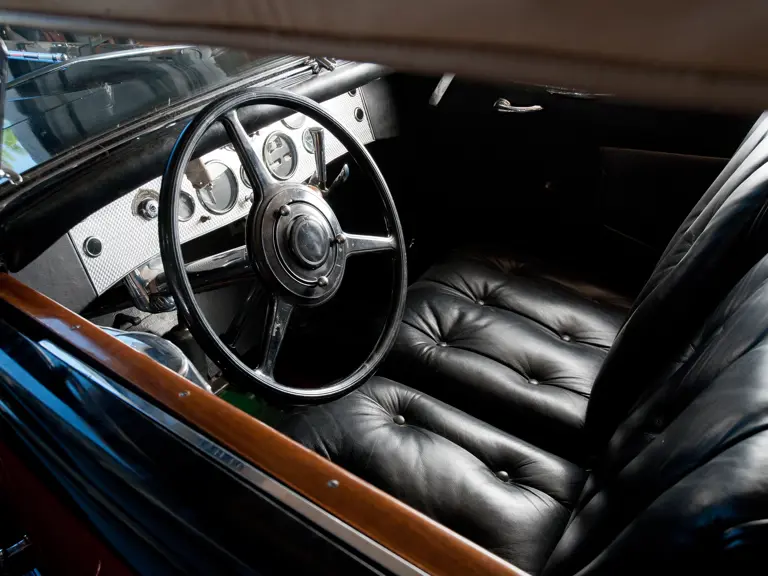

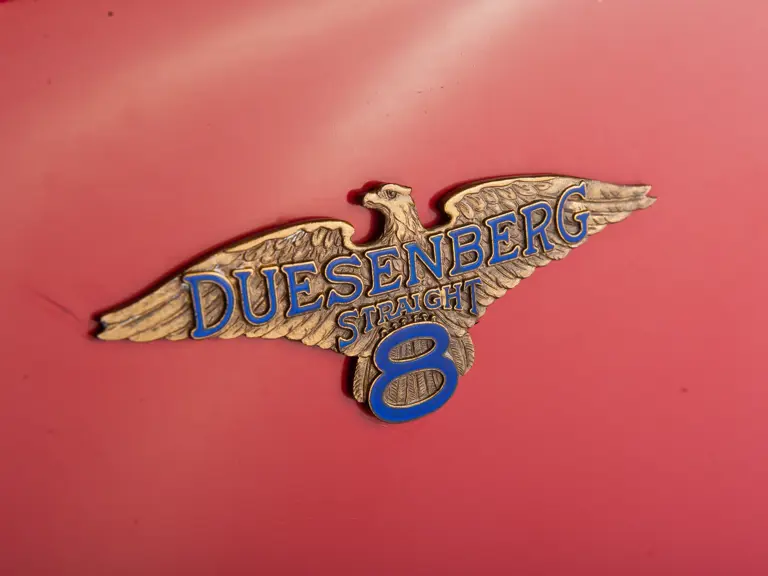
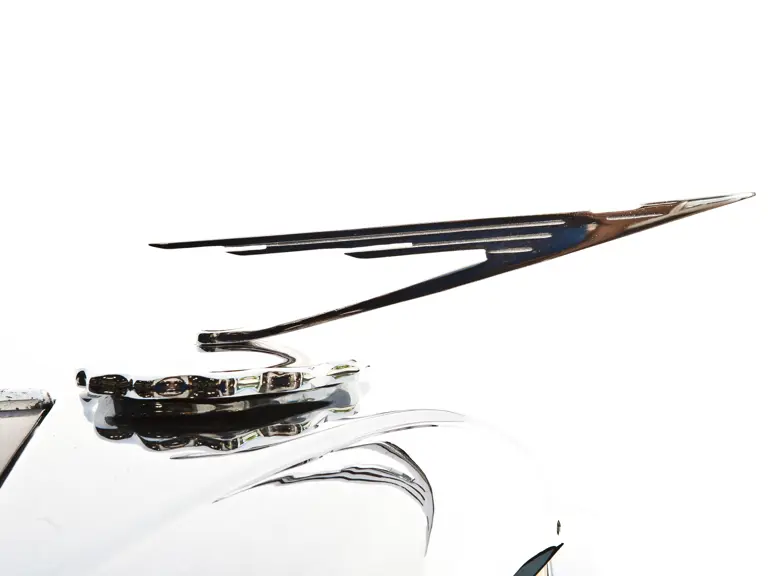
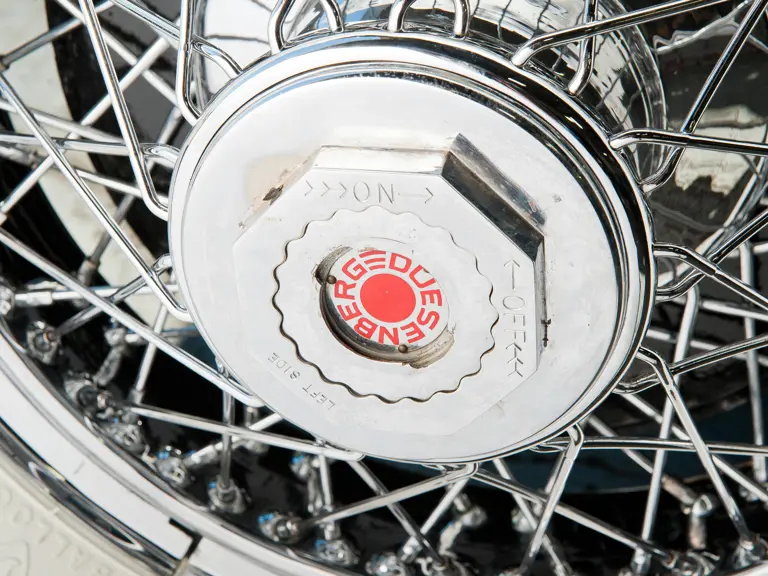



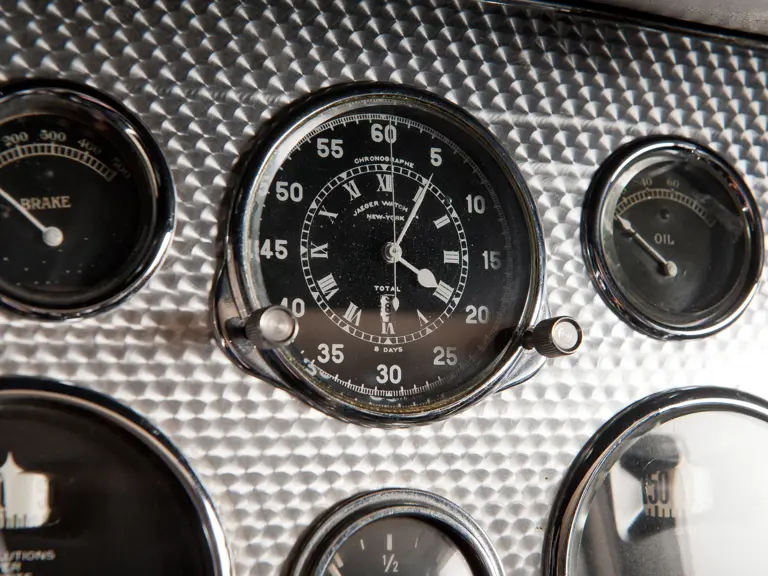

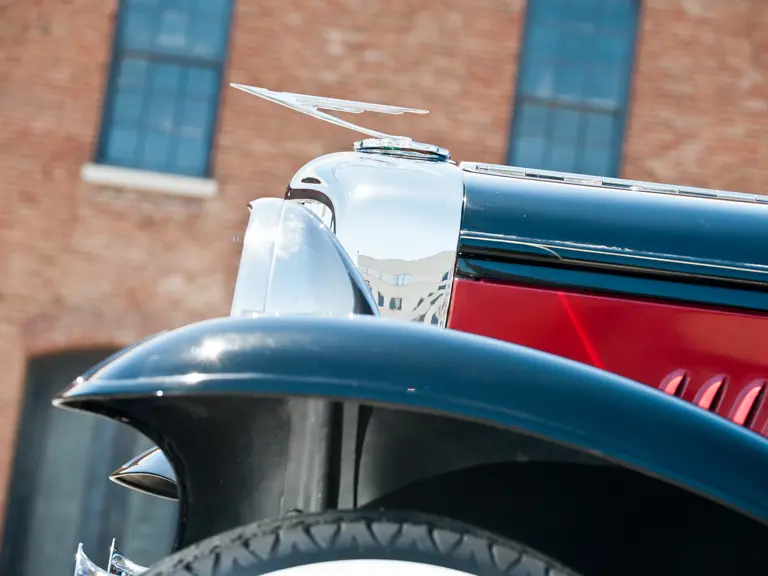

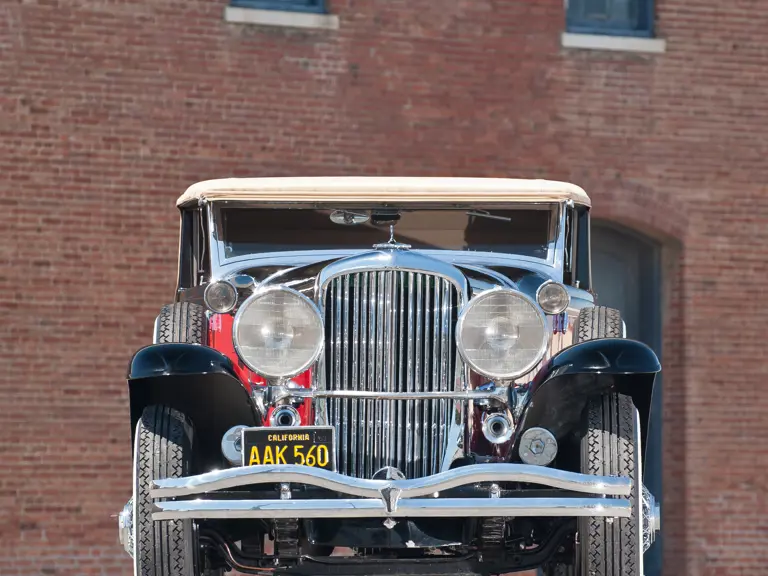
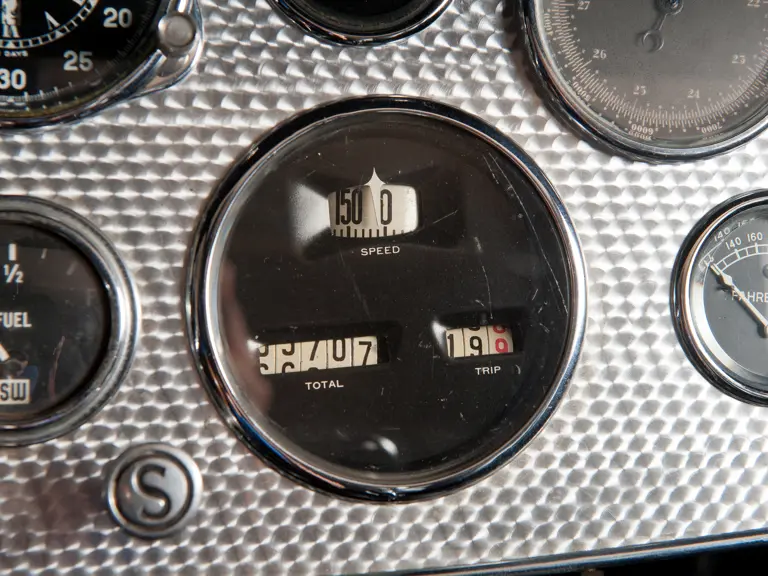

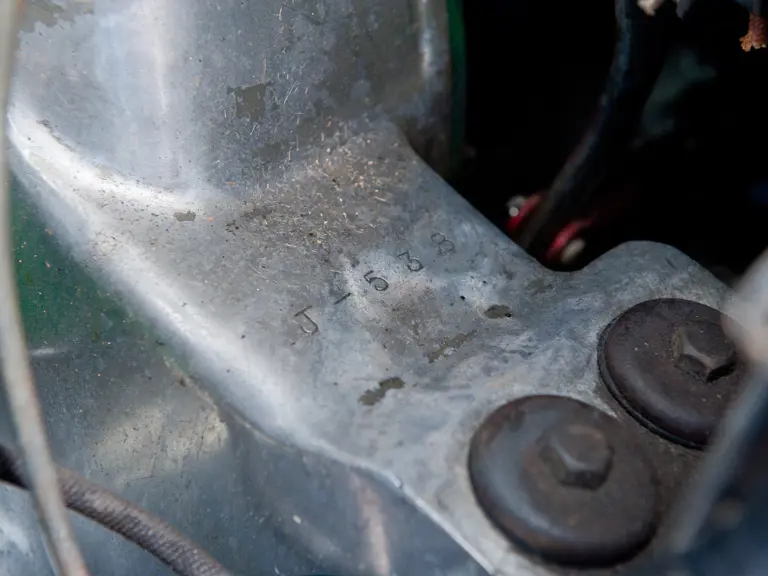
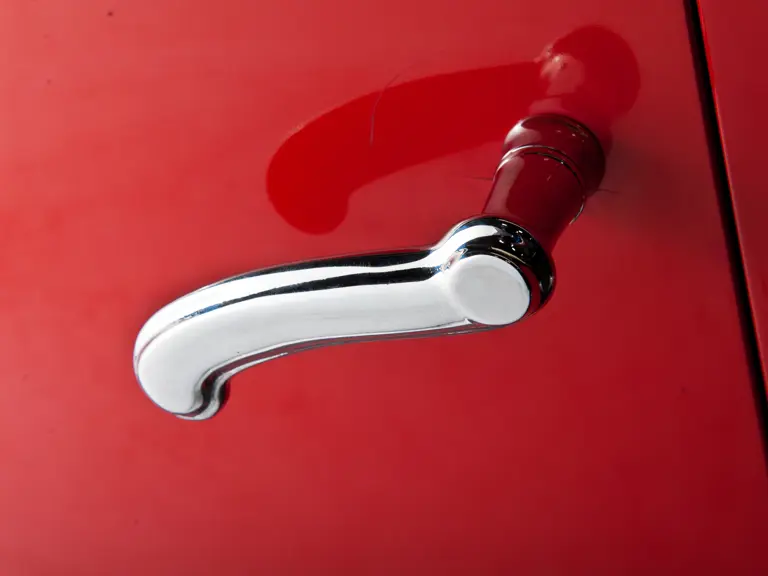

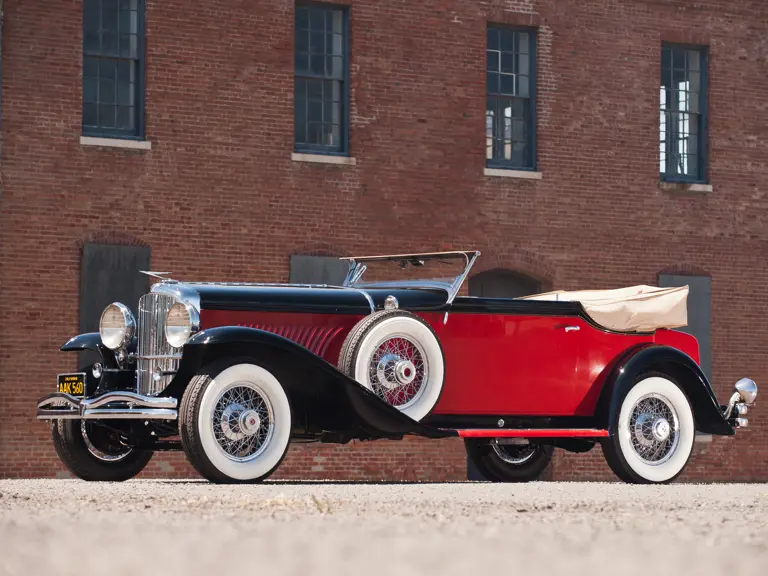

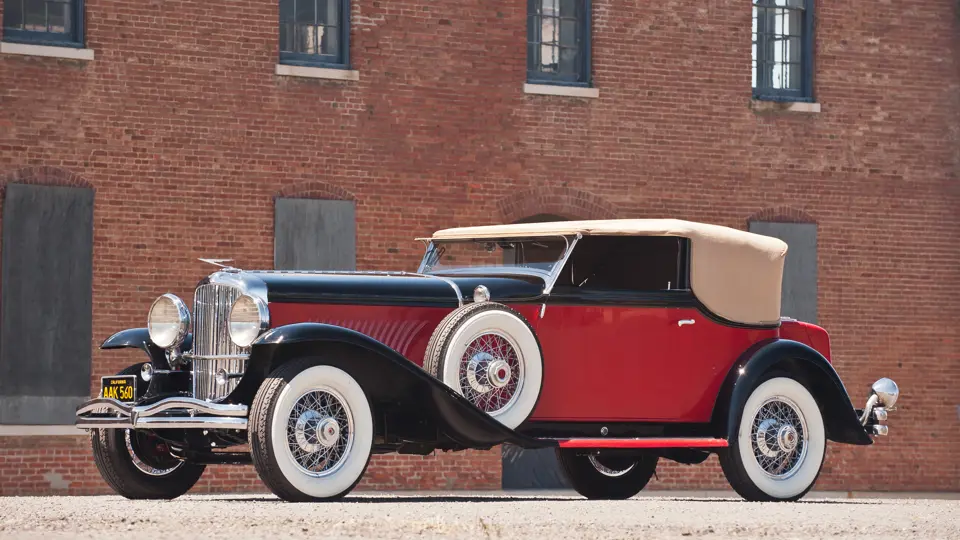
 | Monterey, California
| Monterey, California
